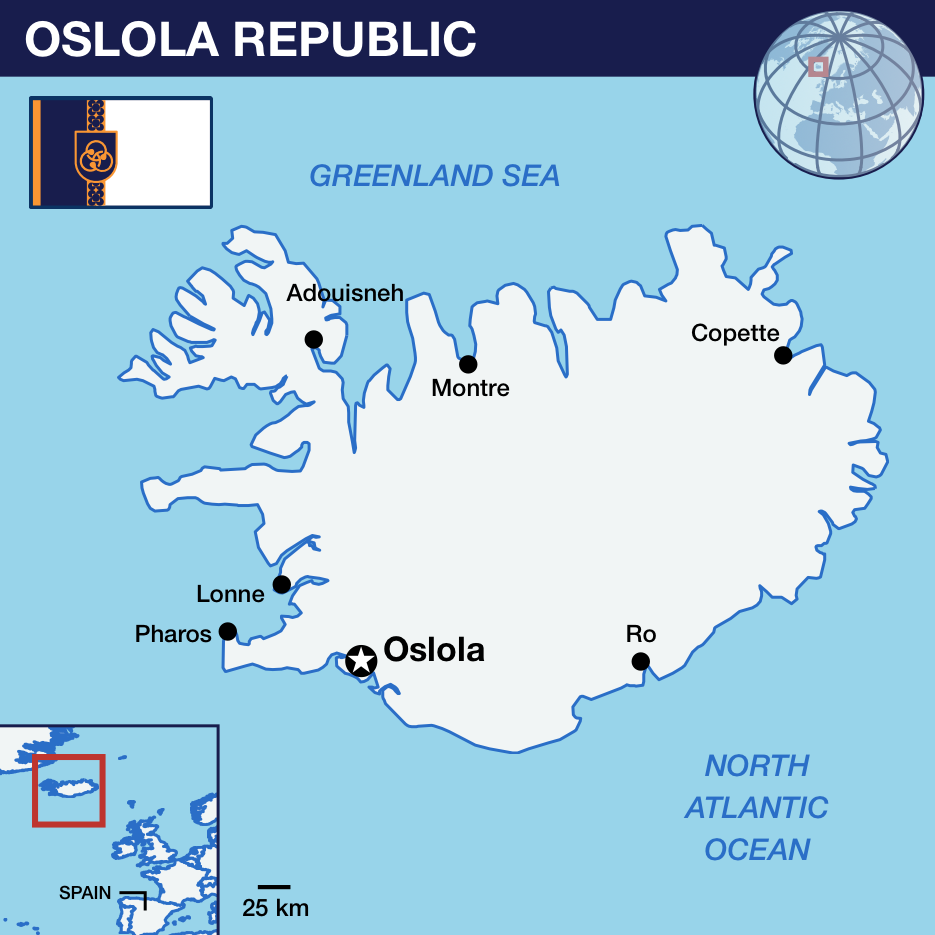NEW Story: School Photo
Oslola
Oslola is part of the Volcanic Commonwealth
| Oslola Republic | |
|---|---|
| Constituent Republic of Vekllei | |
|
|
|

|
|
| Part of the Volcanic Commonwealth | |
| Capital | Oslola |
| Population | 8,331,426 |
| Area | 103,125 km² |
| Languages | Oslolan Algic, English, Oslolan Islandi |
| Vekllei Accession | 1836, as part of the British Atlantic Territories |
The Oslola Republic is a constituent republic of Vekllei in the North Atlantic Ocean. It is the most populous Vekllei republic, and is historically its centre of industry, education and administration. The large island sits atop the border of the European and North American tectonic plates and is famous for its volcanic activity and striking landscapes characterised by flower tundras, glaciers, hot geysers and and temperate rainforests.
Oslola has been continuously inhabited for over 4,000 years by Algic Inuits, who are a distinct ethnic and linguistic group from other Arctic Inuits. Archaeological evidence suggests Irish settlers established fishing communities on the south coast in 1200BC, and Scandinavians arrived a hundred years later. Since that time, Algic and Scandinavian/Irish populations (commonly “Scandis”) have participated in united and seperate kingdoms. Oslola is the site of the world’s oldest democracy, which has varied in structure and power through succeeding kingdoms and councils. Oslola was a major centre of power in the British Atlantic Territories and the First Commonwealth that followed it, and in the postwar Fourth Commonwealth retains an important though diminished role.
Oslola has historically been a major entrepôt for trans-Atlantic traffic, and a trade metropole for Vekllei. It enjoys a maritime subarctic climate, with strong warm currents anchored by the Oslola Low Pole warming the southern coast. Summer typically average between 12-25 °C, and about 0-10°C in winter. The high latitude of the republic means it features midnight sun for a couple of weeks in summer. Forests of birch and eucalyptus dominate mossy, cold-weather rainforests that populate the south coast. In the glacial interior and north tundras, scrub and flowers cover mostly treeless valleys and dramatic terrain.
Oslola is densely populated, and the metropolitan region in the south-east comprises one continuous city broken up by mountains and crown lands. The main city, also called Oslola, has a varied character of narrow medium-height streets, railways, canals and street vegetation. It is home to many Vekllei institutions, including Vekllei National University, as well as international organisations like the new UN building and the International Federation of Journalists.